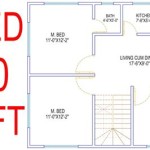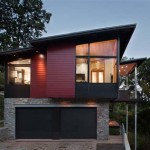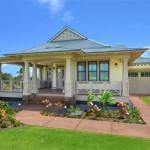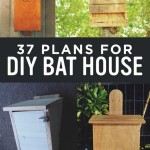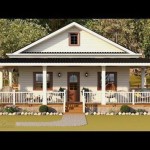An indoor swimming pool is an enclosed swimming facility that is built entirely within the confines of a building. It provides the convenience of swimming without having to leave the comfort of one’s home, regardless of the weather conditions. Many homeowners opt for house plans that incorporate an indoor swimming pool as a luxurious amenity for recreation, exercise, and relaxation.
Designing a house with an indoor swimming pool requires careful planning and consideration of various factors, such as the available space, ventilation, moisture control, and heating systems. Additionally, it is crucial to address safety measures, including proper lighting, anti-slip surfaces, and emergency exits.
In the following sections, we will delve into the various aspects of house plans with indoor swimming pools, including design principles, construction considerations, and the benefits and challenges associated with this type of home feature.
There are a number of important considerations when designing house plans with indoor swimming pools:
- Ventilation and humidity control
- Structural support and foundation
- Heating and insulation
- Safety and accessibility
- Lighting and aesthetics
- Maintenance and cleaning
- Energy efficiency
- Construction costs
Careful planning and attention to these factors will help ensure that your indoor swimming pool is a safe, enjoyable, and functional addition to your home.
Ventilation and humidity control
Proper ventilation and humidity control are essential for maintaining a healthy and comfortable indoor environment in house plans with indoor swimming pools. Without adequate ventilation, moisture from the pool can lead to condensation, mold growth, and other indoor air quality issues. High humidity levels can also make the air feel heavy and uncomfortable.
- Maintain proper ventilation
A well-ventilated indoor swimming pool area should have a dedicated ventilation system that provides a constant supply of fresh air. This can be achieved through the use of exhaust fans, air conditioners, or dehumidifiers. The ventilation system should be designed to remove moisture from the air and prevent condensation from forming on surfaces.
- Control humidity levels
In addition to ventilation, it is important to control humidity levels in indoor swimming pool areas. High humidity levels can contribute to the growth of mold and mildew, as well as make the air feel uncomfortable. Dehumidifiers can be used to remove excess moisture from the air and maintain a comfortable humidity level.
- Use moisture-resistant materials
When choosing materials for indoor swimming pool areas, it is important to select moisture-resistant materials that will not be damaged by high humidity levels. This includes materials for the pool deck, walls, and ceiling.
- Regular maintenance is key
Regular maintenance is essential for keeping the indoor swimming pool area clean and free of mold and mildew. This includes cleaning the pool water, filters, and deck, as well as checking the ventilation system and dehumidifier to ensure they are working properly.
By following these tips, you can help ensure that your indoor swimming pool area is well-ventilated and has a comfortable humidity level, creating a healthy and enjoyable environment for swimming and relaxation.
Structural support and foundation
The structural support and foundation of a house plan with an indoor swimming pool require careful consideration to ensure the stability and longevity of the structure. The weight of the pool water, as well as the additional moisture and humidity, can put significant stress on the building’s framework. Therefore, it is essential to design a robust structural system and foundation that can withstand these loads and maintain the integrity of the house.
The foundation of a house with an indoor swimming pool must be designed to support the weight of the pool water, which can range from tens of thousands to hundreds of thousands of pounds. This typically involves using reinforced concrete or steel beams to create a strong and stable base for the pool and the surrounding structure. The foundation should also be designed to resist moisture and prevent water seepage, which can weaken the foundation and lead to structural problems.
The structural support system for an indoor swimming pool typically consists of steel beams or reinforced concrete columns and beams. These structural elements are designed to transfer the weight of the pool water and the surrounding structure to the foundation. The structural system should be designed to resist bending, shear, and other forces that can occur due to the weight of the pool water and the movement of the building. It is also important to consider the potential for seismic activity in the area and design the structural system accordingly.
In addition to the structural support system, the building envelope must also be designed to resist the effects of moisture and humidity. This includes using moisture-resistant materials for the walls, ceiling, and flooring of the indoor swimming pool area. It is also important to ensure that the building envelope is properly sealed to prevent water vapor from escaping into the rest of the house, which can lead to condensation and mold growth.
Heating and insulation
Heating and insulation are important considerations for house plans with indoor swimming pools to ensure a comfortable and energy-efficient environment. Indoor swimming pools can be a significant source of heat and humidity, so it is important to have a proper heating and insulation system in place to maintain a comfortable temperature and prevent condensation and mold growth.
The heating system for an indoor swimming pool can be integrated with the home’s central heating system or it can be a separate system dedicated to the pool area. Common heating methods for indoor swimming pools include gas-fired heaters, electric heat pumps, and solar heating systems. The choice of heating system will depend on the size of the pool, the climate, and the available energy sources.
Insulation is also an important aspect of heating and energy efficiency for indoor swimming pools. Proper insulation helps to trap heat in the pool area and prevent heat loss through the walls, ceiling, and floor. This can reduce the energy consumption required to heat the pool and maintain a comfortable temperature.
When choosing insulation for an indoor swimming pool, it is important to select a material that is moisture-resistant and can withstand the high humidity levels in the pool area. Common insulation materials for indoor swimming pools include spray foam insulation, closed-cell foam insulation, and fiberglass insulation. It is also important to ensure that the insulation is properly installed and sealed to prevent moisture from penetrating the insulation and compromising its effectiveness.
By carefully considering heating and insulation, you can create a comfortable and energy-efficient indoor swimming pool environment that can be enjoyed year-round.
Safety and accessibility
Safety and accessibility are paramount considerations when designing house plans with indoor swimming pools. Indoor swimming pools can pose potential hazards, especially for young children and individuals with disabilities. Therefore, it is essential to incorporate safety features and accessible design elements to minimize risks and ensure that everyone can enjoy the pool safely and comfortably.
One of the most important safety features for indoor swimming pools is a properly designed and installed pool cover. Pool covers act as a physical barrier to prevent accidental falls into the pool, especially when the pool is not in use. Automatic pool covers are particularly convenient and effective, as they can be easily opened and closed with the touch of a button. Other safety features include non-slip surfaces around the pool deck to prevent slips and falls, as well as proper lighting to ensure clear visibility in the pool area.
Accessibility is another important consideration for house plans with indoor swimming pools. Individuals with disabilities should be able to access and enjoy the pool safely and independently. This can be achieved through the use of ramps, lifts, and other assistive devices. It is also important to ensure that the pool deck and surrounding areas are wheelchair-accessible and that there is adequate space for maneuvering.
In addition to these safety and accessibility features, it is also important to establish clear rules and guidelines for pool use. This includes supervising children at all times, ensuring that all swimmers are aware of the pool’s rules and potential hazards, and maintaining proper water chemistry to prevent the spread of bacteria and other contaminants.
By carefully considering safety and accessibility, you can create an indoor swimming pool environment that is both enjoyable and safe for everyone.
Lighting and aesthetics
Lighting and aesthetics play a crucial role in creating a visually appealing and inviting indoor swimming pool environment. Proper lighting can enhance the functionality and safety of the pool area, while also contributing to the overall ambiance and atmosphere.
When designing the lighting for an indoor swimming pool, it is important to consider both natural and artificial light sources. Natural light can provide a bright and airy feel to the pool area, while artificial light can be used to create a more intimate and relaxing atmosphere. A combination of natural and artificial light can be used to achieve the desired effect.
Artificial lighting can be used to highlight specific features of the pool, such as the pool deck, the pool itself, or any decorative elements. Underwater lighting can be used to create a dramatic and inviting effect, making the pool a focal point of the room. Colored lighting can also be used to create different moods and ambiances in the pool area.
In addition to lighting, the overall aesthetics of the indoor swimming pool area should be carefully considered. The choice of materials, colors, and textures can have a significant impact on the look and feel of the space. For example, natural materials such as stone and wood can create a warm and inviting atmosphere, while modern materials such as glass and metal can create a more sleek and contemporary look.
The size and shape of the pool can also affect the overall aesthetics of the space. A large, rectangular pool can create a sense of grandeur, while a smaller, more irregularly shaped pool can create a more intimate and cozy feel. The pool deck can also be used to enhance the aesthetics of the space, with different materials and patterns available to create a variety of looks.
By carefully considering lighting and aesthetics, you can create an indoor swimming pool area that is both visually appealing and functional, providing a space for relaxation, recreation, and enjoyment.
Maintenance and cleaning
Regular maintenance and cleaning are essential to keep your indoor swimming pool in good condition and ensure the health and safety of swimmers. This includes a variety of tasks, from cleaning the pool water and filters to maintaining the pool deck and equipment.
- Cleaning the pool water
The pool water should be cleaned and sanitized regularly to remove dirt, debris, and bacteria. This can be done using a variety of methods, such as chlorine, bromine, or salt water chlorination. It is important to follow the manufacturer’s instructions for the specific type of sanitizing system you are using.
- Cleaning the pool filters
The pool filters should be cleaned regularly to remove dirt, debris, and other contaminants from the pool water. The frequency of cleaning will depend on the type of filter you have and the amount of use the pool gets. It is important to follow the manufacturer’s instructions for cleaning your specific type of filter.
- Maintaining the pool deck
The pool deck should be cleaned and maintained regularly to prevent dirt, debris, and algae from building up. This can be done using a variety of methods, such as sweeping, mopping, or pressure washing. It is important to use a cleaner that is safe for the type of decking material you have.
- Maintaining the pool equipment
The pool equipment, such as the pump, filter, and heater, should be maintained regularly to ensure that it is working properly. This may include tasks such as checking the pump basket for debris, cleaning the filter, and inspecting the heater for any leaks or problems. It is important to follow the manufacturer’s instructions for maintaining your specific type of equipment.
By following these maintenance and cleaning tips, you can help ensure that your indoor swimming pool is clean, safe, and enjoyable for everyone.
Energy efficiency
Energy efficiency is an important consideration for house plans with indoor swimming pools, as these spaces can be significant consumers of energy. By incorporating energy-efficient design features, you can reduce the operating costs of your indoor swimming pool and minimize your environmental impact.
One of the most important aspects of energy efficiency for indoor swimming pools is insulation. Proper insulation helps to trap heat in the pool area and prevent heat loss through the walls, ceiling, and floor. This can significantly reduce the amount of energy required to heat the pool water and maintain a comfortable temperature. When choosing insulation for your indoor swimming pool, it is important to select a material that is moisture-resistant and can withstand the high humidity levels in the pool area.
Another important aspect of energy efficiency for indoor swimming pools is the choice of heating system. Gas-fired heaters are the most common type of heating system for indoor swimming pools, but they can be relatively inefficient. Heat pumps are a more energy-efficient option, as they transfer heat from the surrounding air or ground to the pool water. Solar heating systems are also a very energy-efficient option, as they use the sun’s energy to heat the pool water.
In addition to insulation and heating system, there are a number of other energy-efficient design features that can be incorporated into house plans with indoor swimming pools. These include using energy-efficient lighting, installing a pool cover, and using a variable-speed pool pump. By carefully considering energy efficiency, you can create an indoor swimming pool that is both enjoyable and affordable to operate.
In addition to the energy-efficient design features discussed above, there are also a number of operational practices that can help to reduce the energy consumption of indoor swimming pools. These include keeping the pool covered when not in use, lowering the pool temperature when it is not being used, and using a pool timer to turn off the pool equipment when it is not needed.
Construction costs
The construction costs of house plans with indoor swimming pools can vary significantly depending on a number of factors, including the size and complexity of the pool, the materials used, and the local labor costs. However, there are some general cost considerations that can help you budget for your project.
- Size and complexity of the pool
The size and complexity of the pool is one of the biggest factors that will affect the construction costs. A larger pool will require more materials and labor to build, and a more complex pool design will also add to the cost. For example, a simple rectangular pool with a flat bottom will be less expensive to build than a free-form pool with a raised spa and waterfall feature.
- Materials
The materials used to build the pool will also affect the cost. Concrete pools are the most common type of pool, and they are also the most affordable. However, fiberglass pools and vinyl-lined pools are also becoming increasingly popular, and they can offer some advantages over concrete pools, such as lower maintenance costs and a shorter construction time. The cost of materials will vary depending on the type of pool you choose and the quality of the materials.
- Labor costs
The cost of labor will also vary depending on the location of your project. In areas with high labor costs, the construction of an indoor swimming pool will be more expensive than in areas with lower labor costs. It is important to get bids from multiple contractors to get the best possible price for your project.
- Other costs
In addition to the cost of the pool itself, there are also a number of other costs to consider, such as the cost of excavation, plumbing, electrical work, and landscaping. These costs can vary depending on the size and complexity of your project, but they can add up quickly. It is important to factor these costs into your budget when planning your indoor swimming pool project.
By carefully considering all of the factors discussed above, you can get a better understanding of the construction costs associated with house plans with indoor swimming pools. This will help you make informed decisions about the size, complexity, and materials used in your pool, and it will also help you budget for your project.










Related Posts


